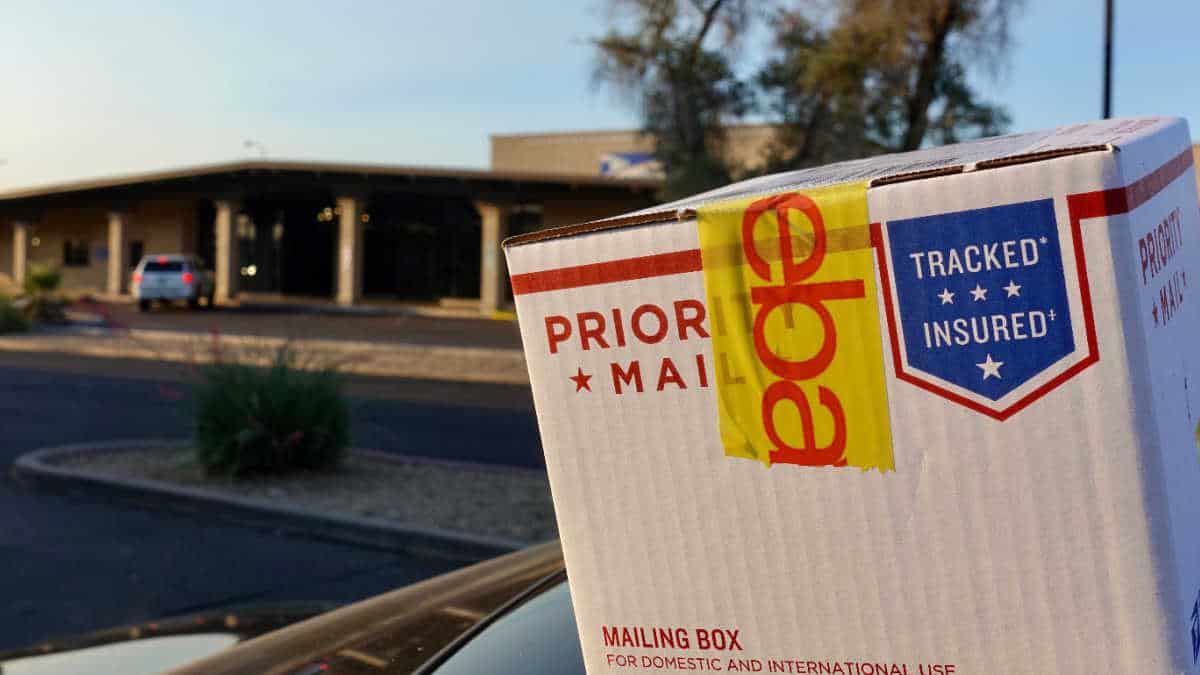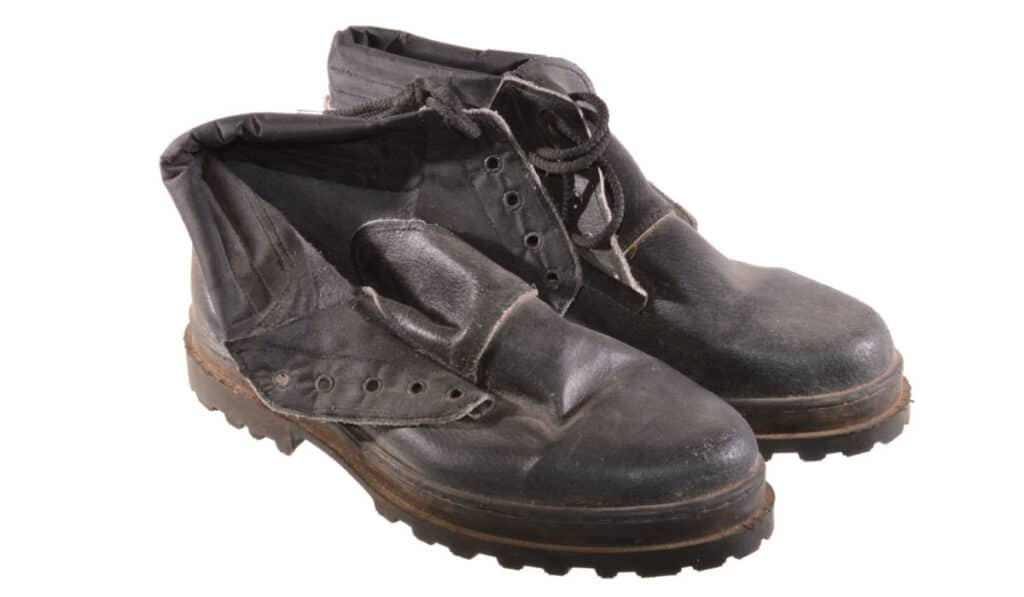As an Amazon Associate I earn from qualifying purchases.
When I first started selling on eBay I never thought anything of just dropping the item in a box or polymailer, slapping on a label, and sending it off.
It wasn’t until I received a frustrated message asking why there was no packing slip, no invoice, no note, or anything else inside.
I hadn’t decided to be minimal, it had just never occurred to me to do things differently.
So, if you’re here, you’re ahead of where I was when I first started! Luckily, selling on eBay isn’t rocket science so it was a fairly easy question to figure out.
Let’s take a look at some of the pros and cons of including packing slips on eBay and decide whether or not it’s worth it.
Spoiler: I don’t include them and have now sent out over 10,000 orders.
What Is A Packing Slip?
A packing slip, also known as a waybill, shipping list, or packing list, is a document that lists all the items included in a package. It is typically included inside the package along with the ordered items before shipping. The purpose of a packing slip is to ensure that everything in the shipment is correct and accounted for, including the exact counts of multiple SKUs. Packing slips are commonly used in eCommerce businesses to help merchants stay organized, create familiarity with customers, and run operations smoothly.
Packing Slip Definition FAQs
Packing Slip vs. Shipping Label
A packing slip is a document that lists all the items included in a package, while a shipping label is a document that is attached to the package and contains information such as the recipient’s address, the sender’s address, and other pertinent shipping information.
The packing slip is typically included inside the package, while the shipping label is affixed to the outside of the package.
Packing Slip vs. Invoice
A packing slip lists all the items included in a package and is typically included inside the package before shipping. An invoice, on the other hand, is a billing document that is focused on the verification of payment rather than the receipt of goods. Invoices are a request for payment after goods or services have been delivered. So, while they may contain much of the same information, they have different functions and are found in different places during the shipping process.
Packing Slip vs. Bill of Lading
Packing slips list all the items included in a package and are typically included inside the package before shipping. A bill of lading, on the other hand, is a legal shipping document that serves as a contract between the shipper and the carrier. It contains details such as the type, quantity, and destination of the goods being shipped
A bill of lading is used to transfer ownership of the goods from the shipper to the carrier and to provide evidence of the contract of carriage. While both documents may contain some similar information such as SKU numbers and quantities, they serve different purposes and are tendered to different people (either the customer or the shipper).
Packing Slip vs. Proof of Delivery
A packing slip is a document that lists all the items included in a package and it placed inside before shipping. A proof of delivery, on the other hand, is a document that serves as evidence that a shipment has been delivered to its final destination. It is usually signed by the recipient upon delivery.
While both documents may contain some similar information such as SKU numbers and quantities, they serve different purposes.
Naturally, eBayer’s who want to seem “legit” are wondering if they should include them too.
Let’s see what our overlord (eBay) has to say on the subject.
Guidance From eBay
First off, eBay doesn’t really care whether you include packing slips or not and does not actually require any sort of paperwork to be included in your order.
All of eBay’s tracking is done with the actual tracking number from the shipping company and they never see or touch sent packages (with the exception of their authentication service).
So why do people choose to do it? Sellers who choose to send packing slips with their orders do so to add a sense of professionalism.
On the other hand, not including a packing slip can save time, resources, and money (you will probably have to buy a separate printer).
What’s more, as paperless business practices become more common, omitting a packing slip may be seen as environmentally friendly (I guess I was just ahead of my time…).
Since eBay can’t track any papers in the order (they only look at digital communication in the even of an issue) then it’s more helpful to keep everything on the platform (via the message system) anyway.
However, these points don’t apply to everyone and many people should still be including packing slips. Let’s see if you fit into one of those camps.
The Case For Providing Packing Slips
Many of the things that I buy on eBay do, in fact, have packing slips in them. However, that’s because I buy from a specific type of seller (usually large clearance stores or outlets).
If you’re in that boat, you’re probably already including packing slips because it makes things easier for you. Here’s how to know if it will make things better for you:
- If you track items via SKU numbers. Including SKUs or return instructions on your packing slips can make things easier in your warehouse.
- If you have employees picking orders. I personally just use my phone and the eBay app to pick orders as it’s faster and I have no employees. However, when I worked at a warehouse it was much easier to have a stack of packing slips when picking orders. Each packing slip had the item’s title and location to make sure the exact right item was picked. The packers could then scan the packing slip and bring up the order information.
- If you ship mostly internationally. Even though international shipments have customs forms, having a packing slip can help identify items if the package is opened in customs.
- If you ship orders with lots of small items. Having an invoice can assure the customer that all the items are present without having to go back and look through their eBay purchase history. This is especially the case with hobby shops, stores that offer repair items, etc.
If any of the above points apply to you, including packing slips should be automatic. Most large stores that sell on eBay include packing slips as it’s already part of their selling flow (and they sell elsewhere as well).
However, not everyone wants to be a huge eBay seller. But there are a few parks that make including them attractive to smaller sellers as well.
- They take the place of thank you cards. For a while we included thank you cards in all of our orders to beg people for positive feedback and let them know that they could return items if needed. A packing slip is just the more professional version as it can include all the pertinent information.
- They can add a personal touch. Including a packing slip gives you the latitude to add a personal message. At my warehouse job we would always add a handwritten “Thank You!” and sign our name.
- If you’re trying to drive traffic off of eBay. If you have a store on Shopify or your own website you probably want to drive return traffic there to avoid eBay fees. Including a packing slip (especially with a coupon on it) is a great way to do this.
Now, if you do decide to include packing slips on eBay, here’s how to make it as easy as possible!
How To Print A Packing Slip On eBay
eBay used to have a straightforward option to print a packing slip with every order. However, in their typical fashion, they’ve made things “easier” which means that it’s actually more complicated to find what you need.
Here’s the currently best way to print packing slips as far as I can tell:
- Log into Your eBay Account: Visit www.ebay.com and sign in using your credentials.
- Go To The Seller Hub: Hover your mouse over “My eBay” in the upper right corner and select “Selling” from the dropdown menu.
- Click on “Print Labels and Post”: Find this option in the “Tasks” section on the left side of the page in your Seller Hub.
- Select the Item You Want to Print the Label For: After clicking “Print labels and post”, find and select the product you need to print a packing slip for from the list of items waiting to be dispatched.
- Click on “Print Postage Labels or Invoices”: After selecting your item and clicking on the “Postage” button, look for “Print postage labels or invoices” at the top of the dropdown menu.
- Select “Address Labels and Invoice/Packing Slip”: Once the “Print Postage Label” page loads, select “Address Labels and Invoice / Packing Slip” under the “Invoice and Address Labels” heading. Click “Continue”.
- Select Your Printer & Print Packing Slip: Configure your printing preferences, choose your printer from the dropdown menu, and click “Print”.
Do note that eBay’s new design for packing slips takes up more space and prints full-page rather than in the previously available condensed format. As a result, the packing slips now include additional information like shipping charges and sales tax.
In addition, the new packing slip will contain the order number, invoice printing date, record number, name of items ordered, quantity, item specifications, sub-total price, price per item, postage and packing costs, seller discounts, and the total price.
If this isn’t working for you, I would bet money that you made the same mistake that I was making at first and trying to print the packing slip before the label (which is a sensible way of doing things…).
Since it’s sensible, it doesn’t work on eBay. You’ll only be able to print off a packing slip after you’ve created a shipping label. Now go back and try again!
Why We Don’t Include Packing Slips
We’ll get to the full reasons below but the short version is this:
We don’t include packing slips because it’s an extra step (that adds time and expense) without any notable benefits for our business model.
In the thousands of orders we have sent out we have had fewer than 5 people ask for a packing slip. In fact, it’s far more common for people to message us and ask that we don’t include a packing slip or invoice of any kind as the item is a gift.
While some people do get away without a second printer, including a packing slip means that most people will want both a label printer and an additional printer for full-size packing slips.
The way around this is to simply print the packing slip on a label and drop it inside the box but, since I don’t need it to track inventory, it wouldn’t have any additional perks for my business.
Lastly is simply a practical reason: laziness. I don’t include packing slips in eBay packages because it’s all I can do just to get things shipped out some days. Adding in another step without a notable benefit seems foolish.
However, it might not be the same for your business!
Conclusion
I hate that you had to get this far to get the full truth but here it is: it really doesn’t matter if you include packing slips in your eBay packages.
You may find that it improves your shipping flow and inventory tracking but, for most eBay sellers, it’s simply an extra step without a tangible payoff.
Whichever way you decide probably won’t be the make-or-break for your business. So focus on sourcing and listing great times and you’ll be successful regardless!
Good luck out there!








